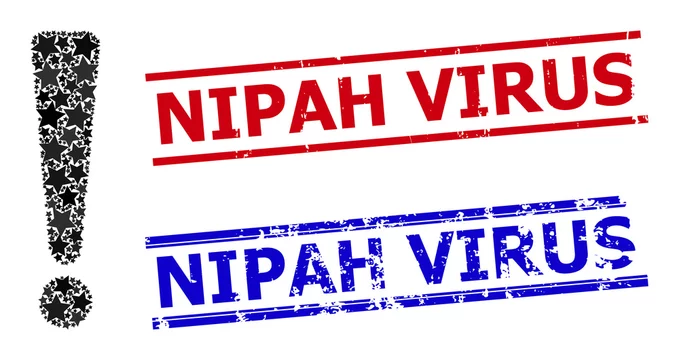Nipah virus, a zoonotic pathogen, has caused several outbreaks in Southeast Asia. Understanding its symptoms is crucial for timely identification and effective management. In this article, we’ll delve into the various Nipah virus symptoms, their manifestations, and the importance of awareness.
What is Nipah Virus?
Nipah virus is a highly contagious virus that was first identified in Malaysia and Singapore in 1998. It can be transmitted to humans from animals, particularly fruit bats and pigs. Human-to-human transmission has also been documented.

Common Symptoms of Nipah Virus
- Fever and Headache
- Fever is one of the initial symptoms of a Nipah virus infection. It is often accompanied by severe headaches.
- Muscle Pain and Fatigue
- Muscle pain and fatigue are common early signs of the infection. Patients often experience generalized weakness and lethargy.
- Respiratory Issues
- Nipah virus infection can lead to various respiratory symptoms such as cough, shortness of breath, and sore throat.
- Nausea and Vomiting
- Individuals infected with Nipah virus may experience nausea and vomiting.
- Neurological Symptoms
- In some cases, the infection can progress to severe neurological symptoms such as encephalitis, causing disorientation, confusion, and even coma.
- Seizures
- Seizures may occur in severe cases of Nipah virus infection, indicating the virus’s impact on the central nervous system.
- Cognitive Changes
- Patients might experience alterations in consciousness, cognitive abilities, and behavior.
🪧Nipah Virus: Understanding the Threat and Prevention Measures
Importance of Recognizing Symptoms Early

Early identification of Nipah virus symptoms is crucial for prompt medical intervention. Due to its high fatality rate, early detection and isolation of cases can prevent further spread within communities.
Prevention and Precautionary Measures
- Avoid Contact with Infected Animals
- Stay away from animals that may carry the virus, particularly sick pigs and bats.
- Practice Good Hygiene
- Wash your hands frequently with soap and water. Use hand sanitizers if soap is not available.
- Avoid Consuming Raw Palm Sap or Fruits Bitten by Bats
- Refrain from consuming products that could be contaminated, especially by bat saliva.
- Isolate and Report Suspected Cases
- If you suspect a case of Nipah virus infection, isolate the individual and report to the nearest healthcare facility.
Conclusion
Being aware of the Nipah virus symptoms and taking necessary precautions are vital to prevent outbreaks and safeguard public health. Early recognition, timely medical care, and effective preventive measures can significantly reduce the impact of this potentially fatal virus. Stay informed, stay safe!
FAQs about Nipah virus symptoms:
Q1: What are the primary symptoms of Nipah virus infection?
A: Nipah virus symptoms typically include fever, headache, muscle pain, fatigue, and respiratory issues such as cough and shortness of breath.
Q2: Are there gastrointestinal symptoms associated with Nipah virus infection?
A: Yes, some individuals with Nipah virus infection may experience nausea, vomiting, and abdominal pain, making gastrointestinal symptoms part of the clinical picture.
Q3: Are there neurologic symptoms associated with Nipah virus infection?
A: Yes, neurological symptoms like confusion, drowsiness, disorientation, and in severe cases, seizures and coma, may occur in Nipah virus-infected individuals.
Q4: Is sore throat a common symptom of Nipah virus infection?
A: Yes, sore throat can be a symptom of Nipah virus infection, often accompanied by difficulty swallowing and a persistent cough.
Q5: Can Nipah virus cause encephalitis?
A: Yes, Nipah virus infection can lead to encephalitis, causing inflammation of the brain and leading to symptoms like altered consciousness, hallucinations, and focal neurological deficits.
Q6: What are the warning signs of severe Nipah virus infection?
A: Warning signs of severe Nipah virus infection include a high fever, altered mental state, severe weakness, and encephalitic symptoms such as seizures.
Q7: Are there respiratory symptoms associated with Nipah virus infection?
A: Yes, respiratory symptoms like cough, difficulty breathing, and pneumonia-like symptoms can manifest in individuals infected with the Nipah virus.
Q8: Can Nipah virus cause muscle pain and fatigue?
A: Yes, muscle pain and fatigue are common symptoms of Nipah virus infection, often accompanied by generalized weakness and malaise.
Q9: Is dizziness a symptom of Nipah virus infection?
A: Yes, dizziness and disorientation can occur as symptoms of Nipah virus infection, particularly in severe cases where the central nervous system is affected.
Q10: Are sore muscles and joints common in Nipah virus infection?
A: Yes, individuals with Nipah virus infection may experience sore muscles and joints, adding to the spectrum of symptoms associated with this viral illness.
If you like this post or if you learned something new, please share it with your friends and family followers on social media. You can share it on WhatsApp, Facebook, Instagram, Telegram, Pinterest, Twitter, Google NEWS, Google+, and other social media sites. You can also subscribe to my YouTube channel.

